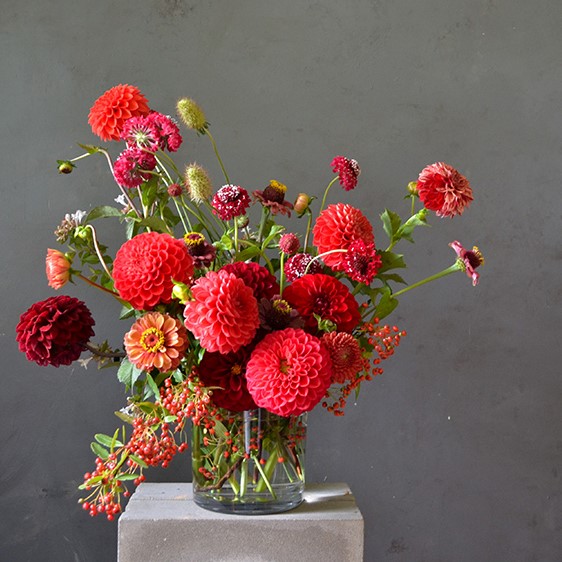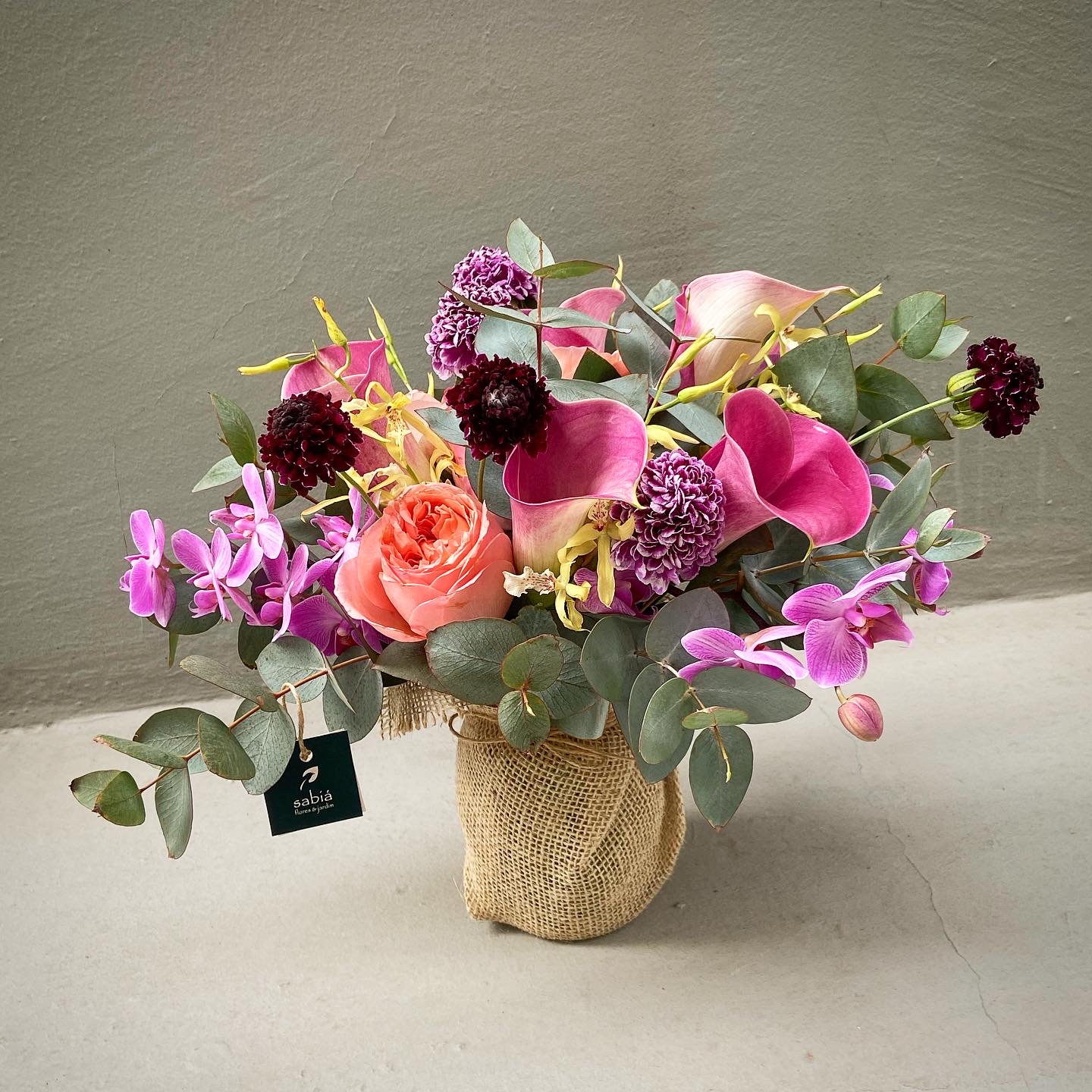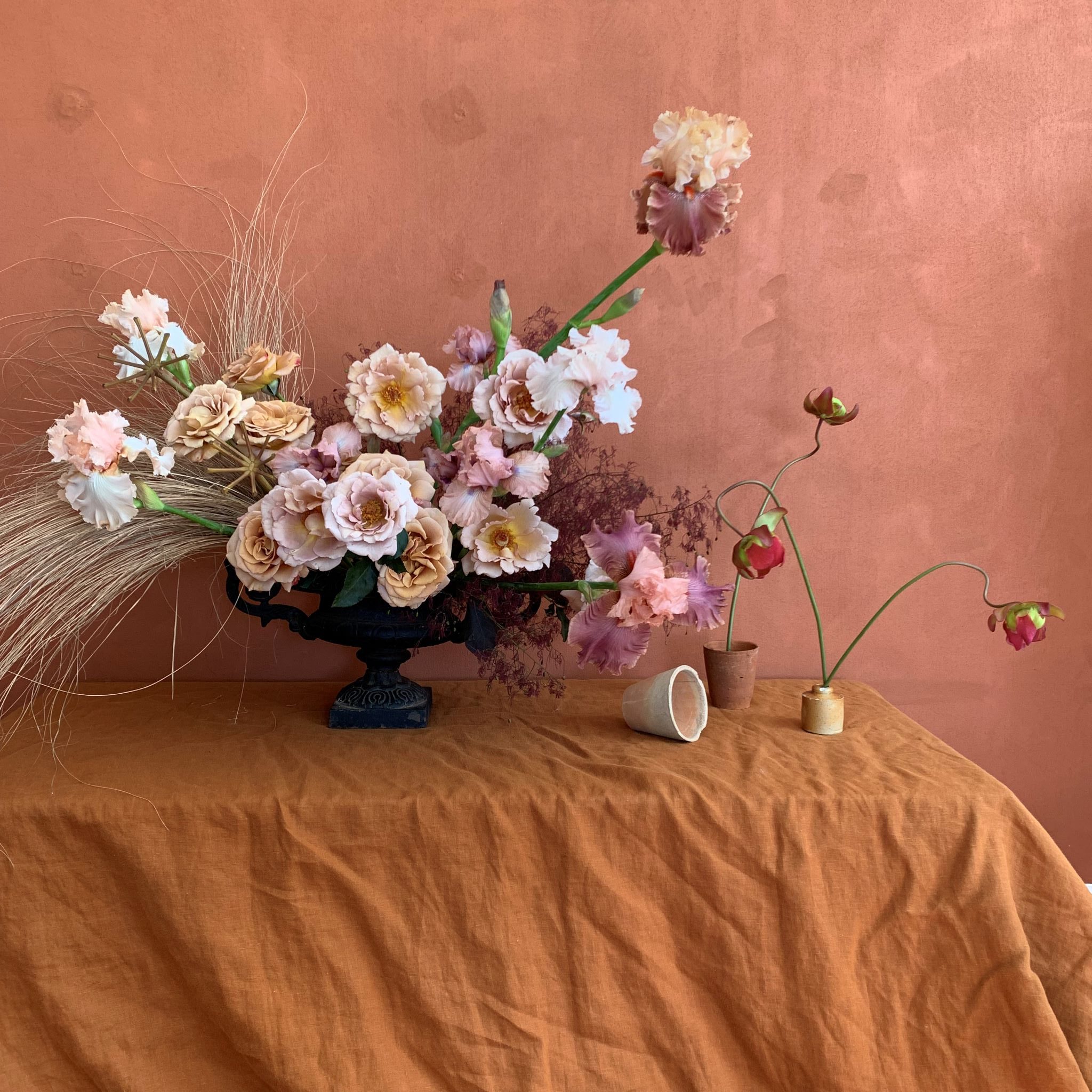Buy a better bunch
As a customer, you have power to influence the impact your purchase has on the environment.
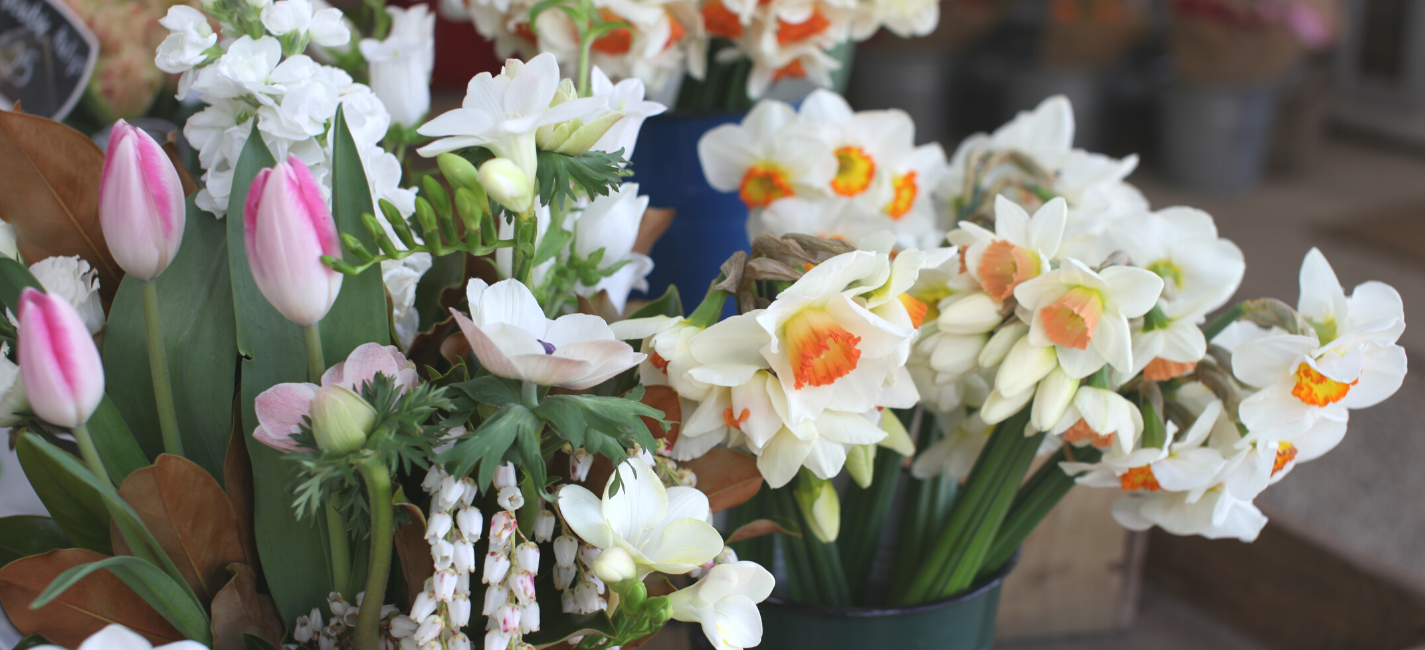
More sustainable floral design choices
Follow these simple steps and you will be well on your way to making a more sustainable floral design choice:
- Buy local and in-season flowers wherever possible.
- Purchase a design that does not use floral foam.
- Request simple packaging.
- Know your options.
Buy local and in-season flowers wherever possible
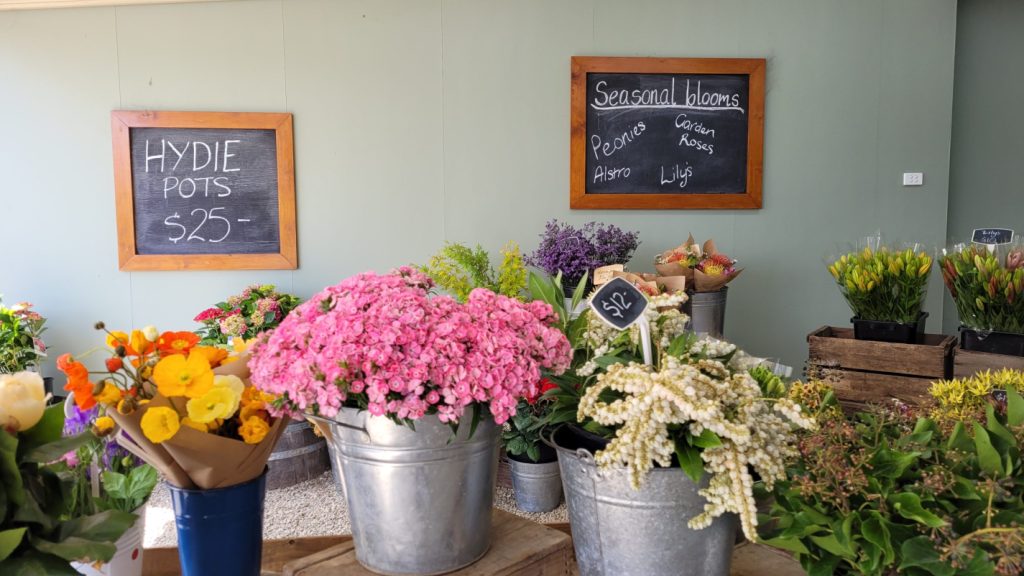
When you opt for locally-grown flowers that are naturally in season in your part of the world, you are:
- generally selecting fresher flowers as they won’t have travelled large distances to reach your florist
- often purchasing a higher quality product. A plant grown in its natural season produces a stronger, healthier cut stem – a flower with scent, vitality and resilience
- supporting local businesses and investing in your local economy
- avoiding additional chemical exposure associated with fumigating and processing imported flowers
- reducing the carbon footprint associated with transporting flowers long distances, often by airplane.
How do you know what flowers are in season locally? Ask your florist! A good florist should have a range of different seasonal varieties you can select from. Flower varieties change from week to week, just like fruit and vegetables, so what’s available one week isn’t necessarily there the next.
If there are no locally-grown flowers where you are and your florist only has imported varieties, ask your florist for flowers with a level of certification.
Just like chocolate and coffee, certifications exist in the cut flower industry to support better supply chain practices. Certifications might ensure farm workers are paid fairly or that toxic chemicals aren’t used on the farm.
Purchase a design that does not include floral foam
Floral foam has been the material of choice for florists for the past 50 years. However, it is a single-use plastic and recent studies have confirmed that it harms aquatic animals. Sadly, floral foam can hang around for hundreds if not thousands of years after the flowers have died and often this applies to the plastic bases used to create the arrangement too. Many florists no longer use the product at all.
What are the alternatives?
More sustainable design options include:
- a hand-tied bouquet to place in a vase
- an arrangement created directly into a reusable vessel
- flowers in an upcycled vessel such as a jar or a second-hand vase. Re-use is at the heart of all sustainable practice.
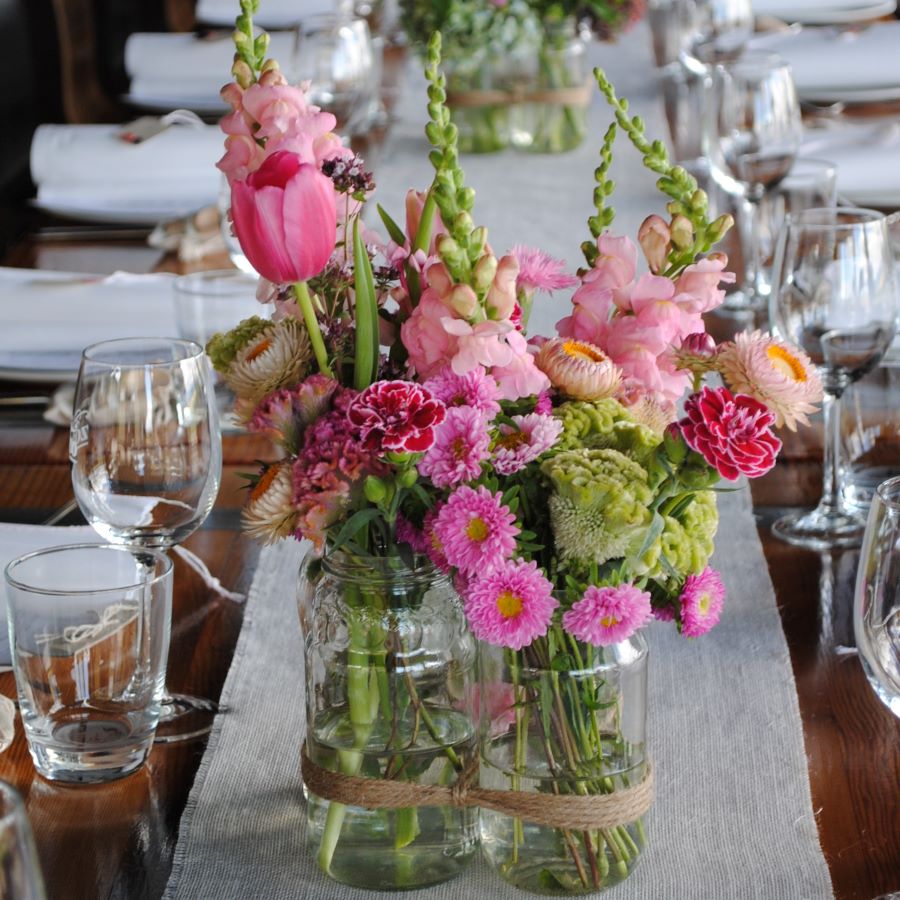
An arrangement created directly into an upcycled jars.
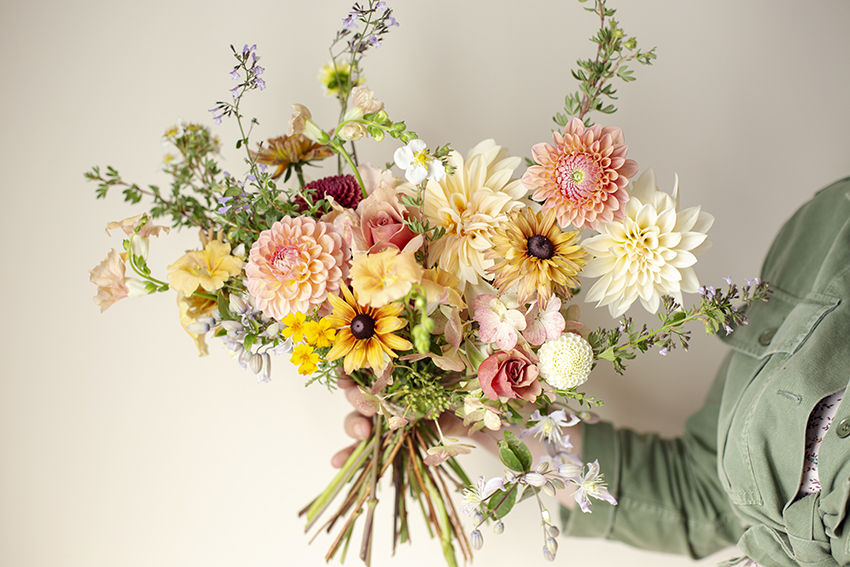
A hand-tied bouquet to place in a vase. by Aesme, UK.
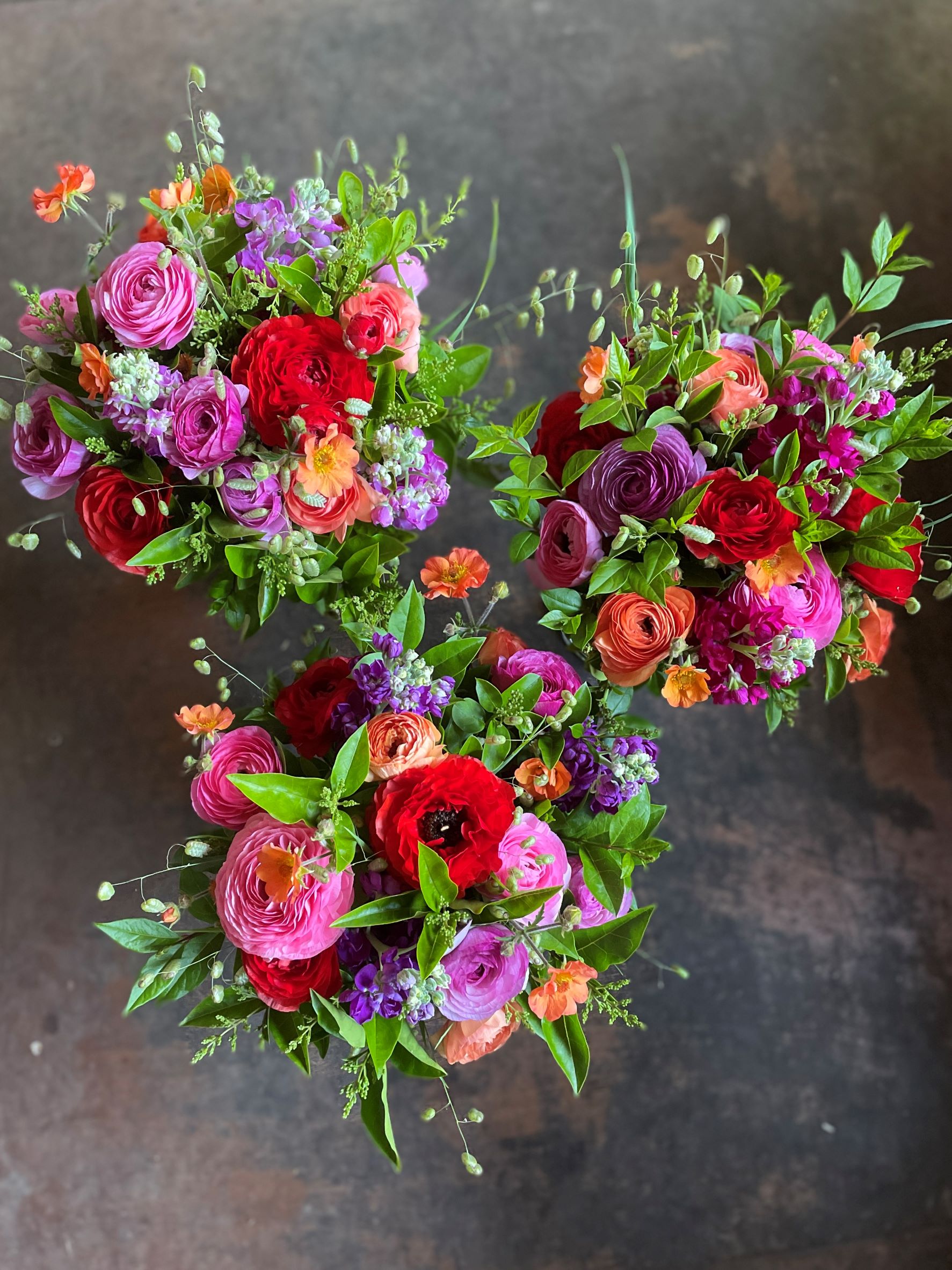
Seasonal mixed bouquets by Forever Green, UK.
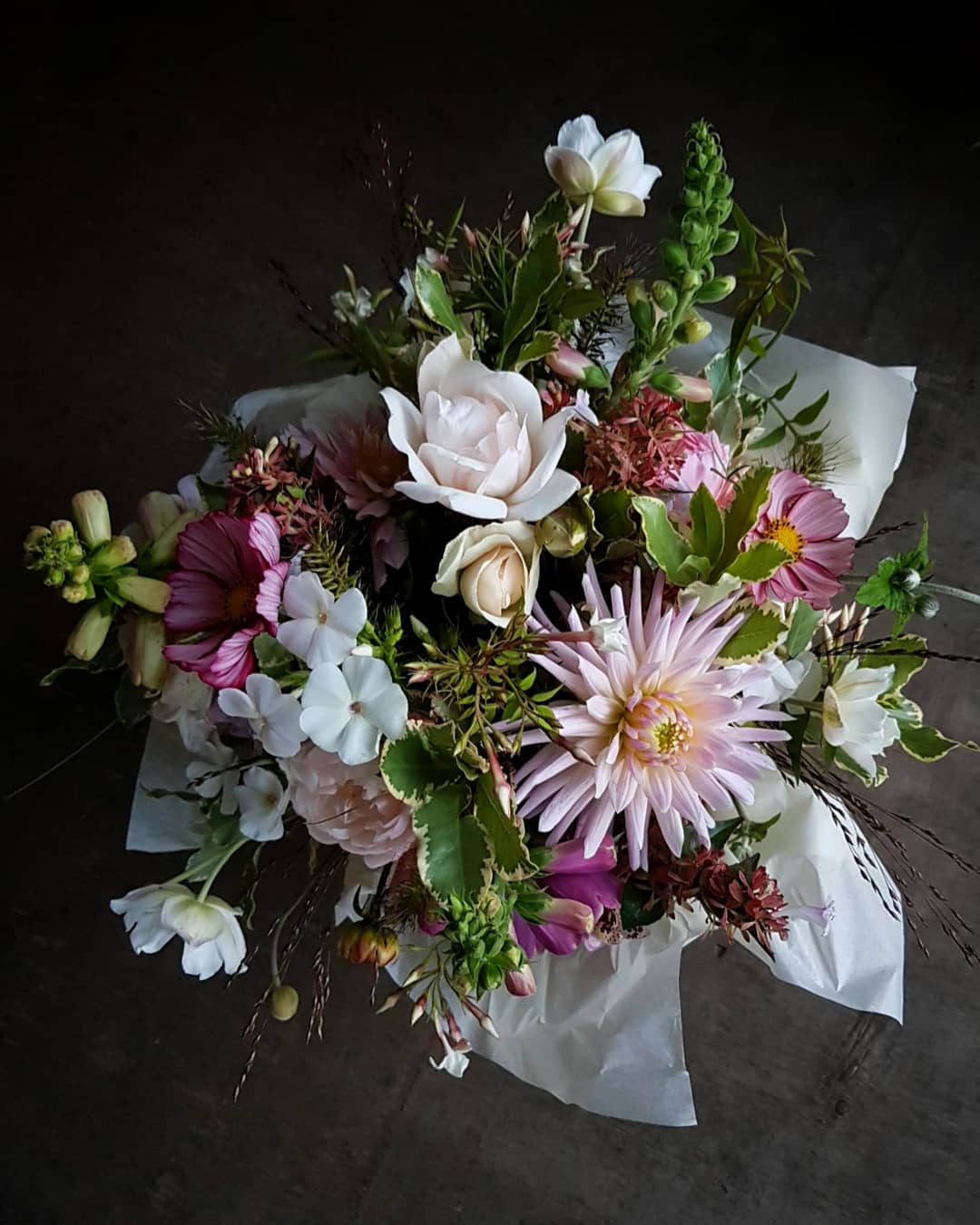
Seasonal mixed bouquets by Forever Green, UK.
Request simple packaging
So many flower-shop wrapping options have sneaky plastics – a shimmer or shine or something to add texture. While real cellophane is a plant-based product and breaks down harmlessly, many plastic wraps often sold as “cellophane” are in fact, plastic.
When asking your florist for your flowers to be gift-wrapped, keep it simple. Request no plastic. Ideally, home compostable waterproof bags around the base of the stems are much better for the environment than plastic bags. However, if your florist is re-using other plastics, this is a good thing too – as long as they find the right waste stream.
Flowers are called for at the most joyous or significant times in our lives. At the end of the day, this ought to be your focus. Communicate clearly to your florist or retailer that sustainability is important to you and more often than not, they will be happy to help find the best option for you.
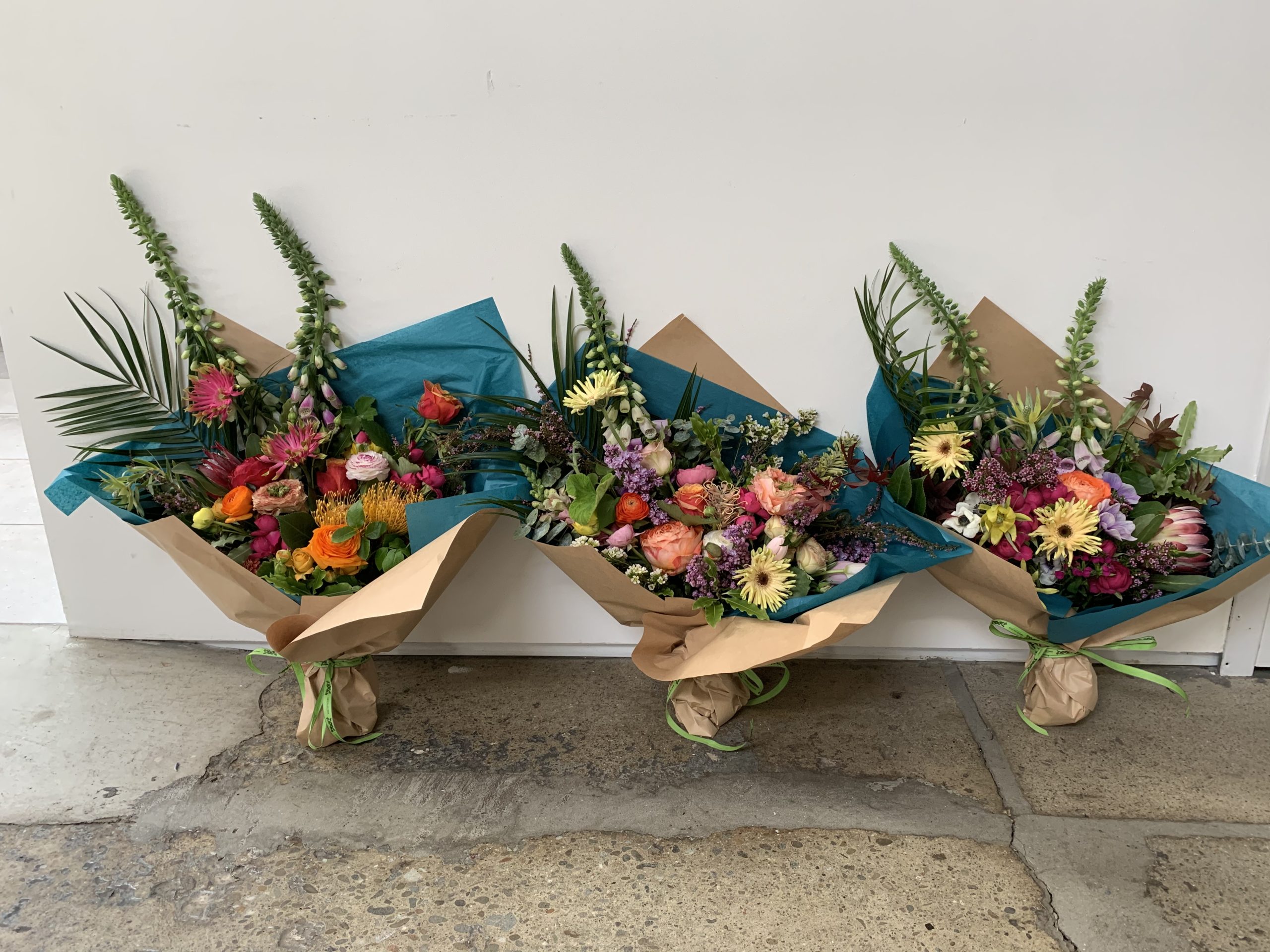
Simple paper gift wrapping - Brown kraft paper and tissue. Using unbleached and recycled paper keeps the environmental footprint of the packaging down. Image Gorgeous and Green.

Avoid plastic with simple paper wrapping.
Know your options
◆ A bunch of flowers
Buy a bunch to be put in a vase of water. If you are sending flowers and you aren’t sure if the recipient has a vase, then perhaps include one as part of the gift.
If you are sending gift-wrapped flowers to someone’s workplace, think about how long the flowers may be there out of water until they reach home. Opt for hardy varieties if you need to. Your florist is the best person to advise you.
◆ An arrangement
If you are looking for a more elaborate arrangement, ask your florist about different sorts of containers they can use to create your arrangement, depending on the size and requirements. The key is to ask for something that doesn’t require floral foam. Your florist can also create a hand-tied bouquet and place it in a vessel. Using foliage to support your arrangement helps the florist, and this will give your arrangement a greener and fuller look.
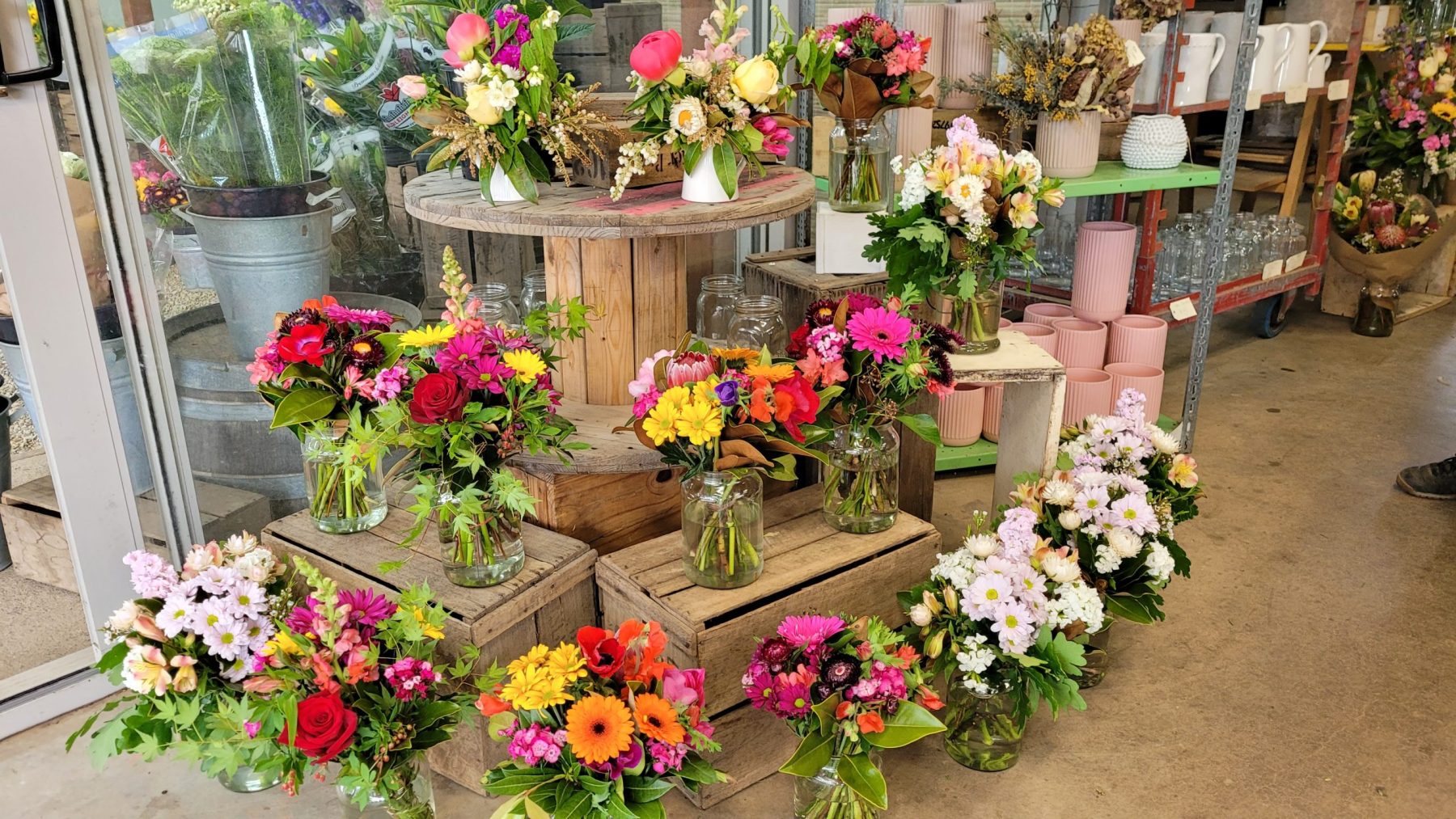
A selection of ready-made mixed bouquets in a florist shop. Image: Lakeside Flowers, AU.
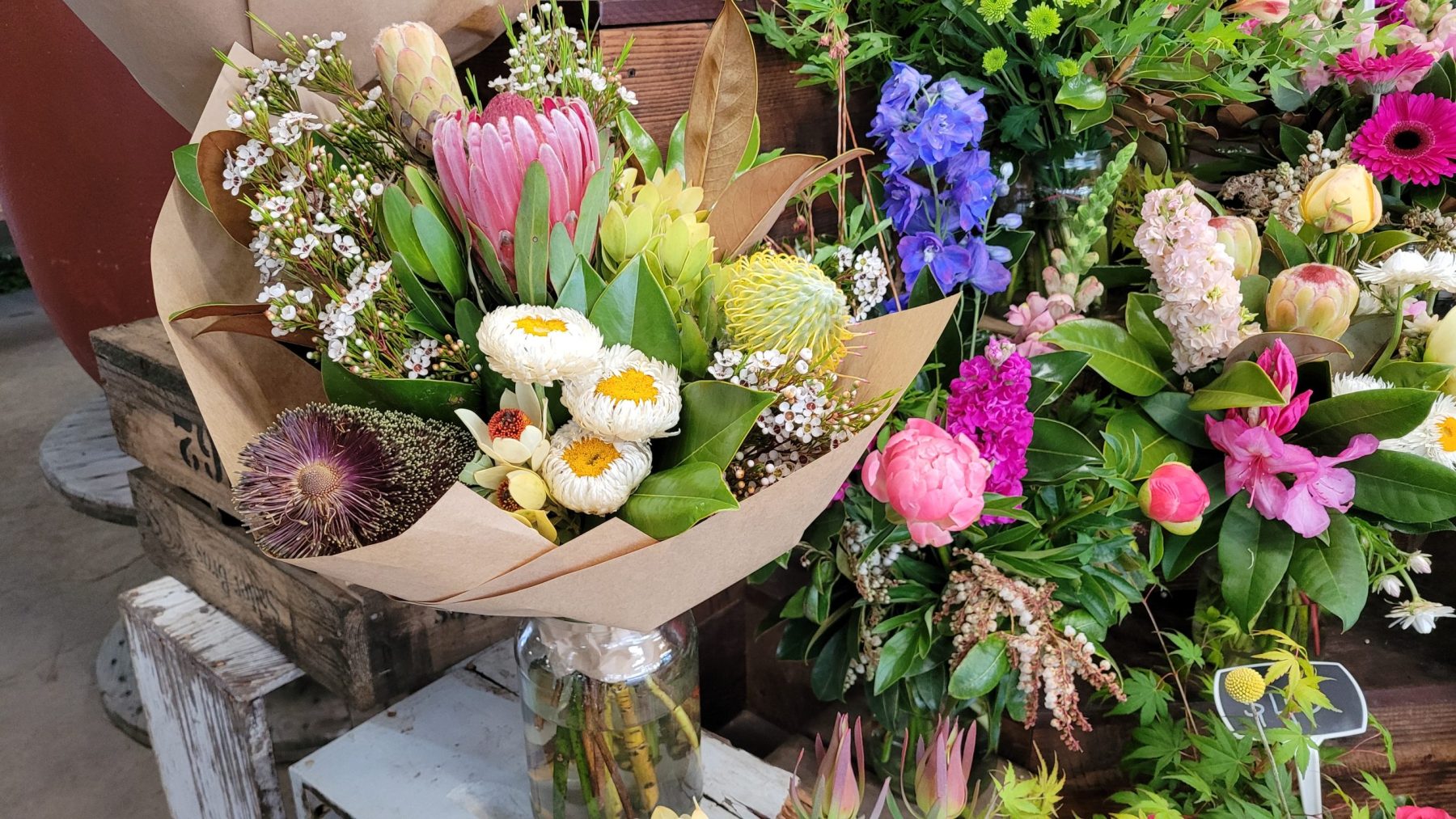
Hand-tied bouquets to place in a vase cut out the need for unnecessary plastics sundries. Image: Lakeside Flowers, AU.
Eco-friendly weddings and events
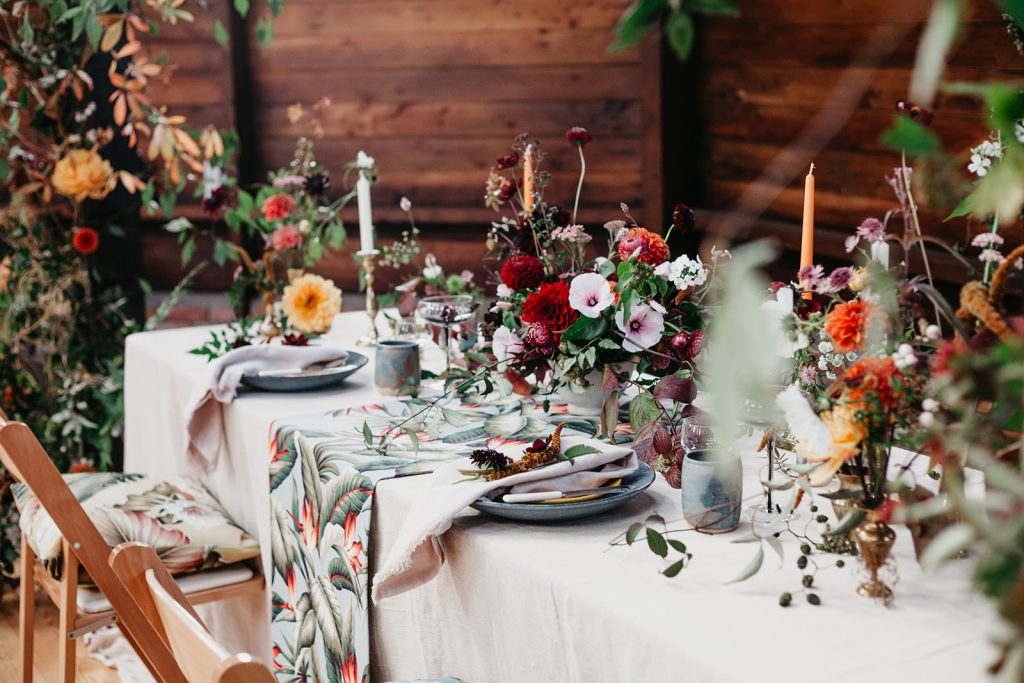
Eco-friendly table decoration by Studio Seapink, UK.
Weddings and events can incorporate a lot of flowers. Good decisions in the planning process can have a huge impact on the environmental footprint left by your event.
For information on Eco-Friendly Weddings and events see our handy resource.
Event flowersEco-friendly funerals

Eco-friendly funeral design by Sarah Penny Flowers, UK.
Flowers play an important role in funeral and memorial services across many cultures. But sadly, funeral tributes can leave a lasting legacy of unnecessary waste.
To cut out waste and prevent your tribute from adding more to the world’s plastic crisis, see our advice for consumers on eco-friendly funeral designs
Funeral flowers

